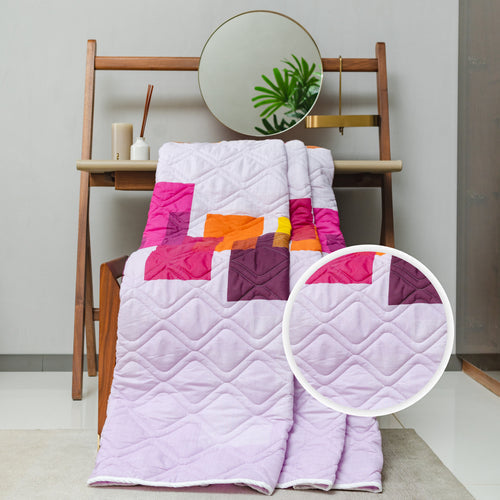Difference between duvet and comforter

A duvet is a type of blanket consisting of a soft flat bag filled with down, feathers, or a synthetic alternative. It is typically used as a covering for a bed, serving as a warm and cozy layer. Duvets are often encased in a removable cover, which can be easily washed, and they come in various sizes to fit different bed sizes.
A comforter is a type of bed covering that is typically filled with synthetic fibers, down feathers, or a combination of both. It is designed to provide warmth and comfort during sleep. Comforters are usually encased in a fabric shell, which can be made of cotton, polyester, or other materials. They come in various sizes to fit different bed dimensions.
Duvets and comforters are both types of bedding that provide warmth and comfort, but they have some key differences:
-
Construction:
- Duvet: A duvet is a soft, flat bag filled with down, feathers, wool, or a synthetic alternative. It is designed to be used with a duvet cover, which is similar to a pillowcase and can be easily removed and washed.
- Comforter: A comforter is a thick, quilted blanket filled with synthetic fibers, down, feathers, or a combination of these materials. Comforters are often stitched or quilted to keep the filling evenly distributed.
-
Covering:
- Duvet: Requires a separate duvet cover. The duvet cover can be easily removed for washing or to change the look of the bedding.
- Comforter: Typically comes with a built-in cover, and while some comforters can be used with duvet covers, many are designed to be standalone bedding.
-
Maintenance:
- Duvet: Easy to clean because you can remove the duvet cover and wash it separately. The actual duvet itself doesn't need to be cleaned as often.
- Comforter: Cleaning can be more challenging, especially if the comforter doesn't have a removable cover. Some comforters are machine washable, while others may require professional cleaning.
-
Appearance:
- Duvet: The appearance can be easily changed by swapping out the duvet cover, providing a versatile option for changing the bedroom decor. Duvets are typically plain white or a solid color, as they are meant to be covered with a duvet cover for both protection and aesthetics. The duvet cover can be changed to match the decor or the season.
- Comforter: The appearance is usually fixed, as the comforter itself is the decorative layer. However, some comforters may have reversible designs. Comforters often come in a wide range of colors, patterns, and designs. They are designed to be used without an additional cover, serving both functional and decorative purposes.
-
Fill Material:
- Duvet: Can be filled with a variety of materials, such as down, feathers, wool, or synthetic fibers, allowing for different levels of warmth.
- Comforter: Also available in various fill materials, including down, feathers, synthetic fibers, or a combination. The warmth level depends on the fill power and the type of filling.
-
Cleaning:
- Duvet: Since the duvet cover can be removed, it is easy to wash and change. The duvet itself may not need frequent washing if the cover is used consistently.
- Comforter: Cleaning a comforter can be more challenging, especially if it doesn't have a removable cover. Some comforters are machine-washable, while others may require professional cleaning due to their size and filling.
-
Warmth and Weight:
- Duvet: Often lighter in weight compared to comforters. The warmth can be adjusted by choosing a duvet with a specific fill power.
- Comforter: Tends to be heavier and provides a cozy, all-in-one bedding solution.
-
Versatility:
- Duvet: Duvets are more versatile as you can easily change the appearance of your bedding by swapping out the duvet cover.
- Comforter: Comforters are fixed in terms of design, and if you want a different look, you may need to replace the entire comforter.
Read more: How to select a comforter for this winter
In summary, the main distinction lies in the construction, covering, and maintenance. Duvets are often used with removable covers for easy cleaning and style changes, while comforters are standalone bedding with a fixed appearance and may have a built-in cover. Both serve the purpose of providing warmth and comfort on the bed. The choice between a duvet and a comforter often comes down to personal preference and regional bedding traditions.
